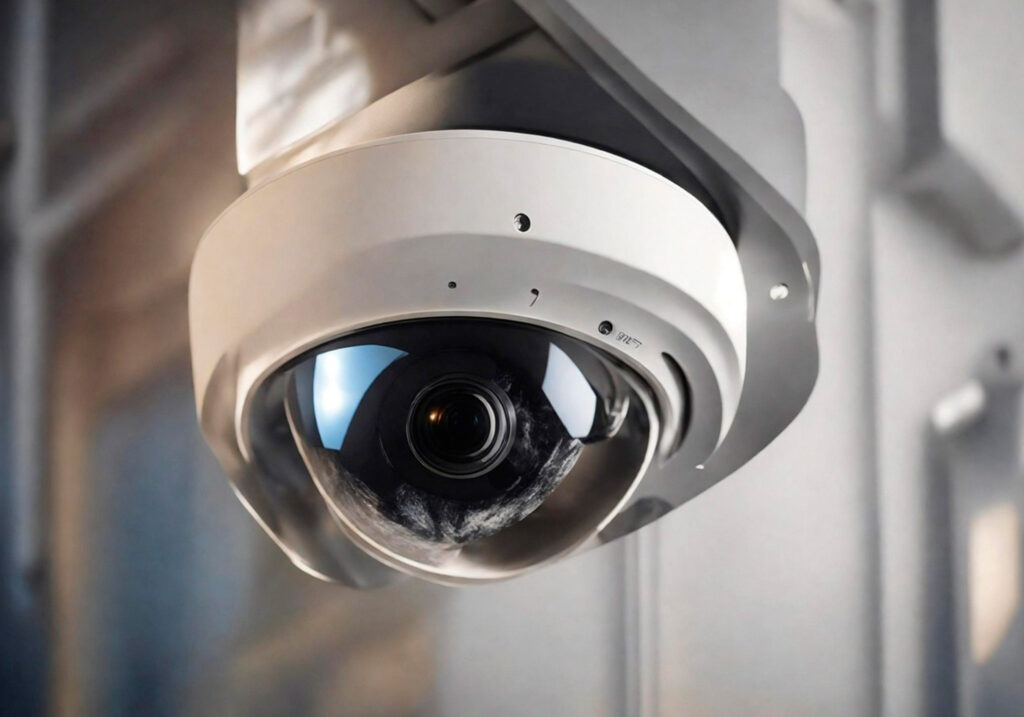Your garage is more than just a place to park your car; it is an entry point to your home and a storage space for valuable items.
Unfortunately, garages are often targeted by thieves due to their relative lack of security compared to main home entrances. A poorly secured garage can leave your car and other tools vulnerable to theft. It also leaves them open to vandalism.
Taking the right security measures is a must as it can significantly reduce the risk of break-ins and provide peace of mind.
Improving garage and car security requires a combination of physical reinforcements, smart technology, and daily habits that help prevent unauthorized access. Whether you use your garage for parking, storage, or as a workspace, it’s important to implement a multi-layered approach to security. Here is how you can make your garage and car more secure.
Strengthening Garage Doors and Entry Points
Garage doors are the most common entry points for intruders, so reinforcing them is the first step to improving security. Standard garage doors, especially older models, can often be forced open with relative ease. Upgrading to a high-security garage door with strong materials, reinforced panels, and secure locking mechanisms can help deter break-ins. Steel or solid wood doors provide better resistance against forced entry compared to flimsy aluminum or fiberglass options.
Installing a garage door lock or deadbolt adds an extra layer of security. Many garage doors rely solely on automatic openers, which can be compromised if a thief gains access to the remote or finds a way to override the system. A manual locking mechanism ensures that even if someone manages to bypass the automatic opener, they will still need to break through another level of protection.
Side doors and windows in the garage should also be reinforced. Many burglars target side entrances because they are often weaker and overlooked in security upgrades. Installing a solid-core door with a deadbolt and using shatter-resistant glass for windows can make unauthorized entry more difficult. Additionally, covering windows with curtains or frosted film prevents burglars from seeing what’s inside, reducing the temptation for a break-in.
Enhancing Garage Door Opener Security
Garage door openers provide convenience, but they can also be a security risk if not properly protected. Older garage door openers use fixed codes that can be easily intercepted by thieves using hacking devices. Upgrading to a rolling code system, which changes the access code every time the door is opened, significantly reduces the risk of code theft. Modern smart garage door openers also allow remote monitoring and control through a smartphone app, enabling homeowners to close the garage door even if they forget.
Keeping the garage door remote secure is just as important as upgrading the system itself. Many people leave their remotes in their cars, making them an easy target for thieves who break into vehicles. Instead of using a traditional remote, consider using a keychain-sized remote that can be kept in your pocket or inside your home.
Another simple but effective measure is to disable the garage door opener when leaving for extended periods. Most garage door openers have a vacation mode or manual lock setting that prevents the door from being opened by a remote. This is especially useful if you are traveling and want to ensure that no one can gain access while you are away.
Installing Security Cameras and Motion Sensors
Surveillance cameras act as both a deterrent and a means of evidence collection in case of a break-in. Installing security cameras inside and outside the garage allows homeowners to monitor activity and record suspicious behavior. Many modern security cameras come with real-time alerts, night vision, and cloud storage options, making them a valuable addition to a garage security system.
Cameras should be placed at key locations, including above the garage door, near side entrances, and inside the garage itself. Visible cameras can discourage burglars from attempting a break-in, while hidden cameras provide a backup in case an intruder tries to disable visible ones.
Motion sensor lights add another layer of security by illuminating the garage area whenever movement is detected. Many break-ins occur under the cover of darkness, and sudden bright lights can startle potential intruders and draw attention to suspicious activity. Installing motion-activated lighting around the garage door, driveway, and side entrances makes it more difficult for criminals to approach unnoticed.
Using Smart Technology for Added Protection
Smart security systems allow homeowners to monitor and control garage security remotely. Smart garage door openers, security cameras, and motion detectors can all be integrated into a central home security system, providing real-time alerts and remote access.
Smart locks for side doors and entryways provide another level of security by allowing homeowners to control access with a smartphone app or a unique PIN code. These locks eliminate the risk of lost keys and can be programmed to grant temporary access to trusted individuals, such as family members or service providers.
Another useful feature is smart alarms, which trigger an alert if unauthorized access is detected. Some alarm systems can even notify local authorities if a break-in occurs, increasing the likelihood of catching intruders in the act. By combining smart security devices with physical reinforcements, homeowners can create a comprehensive security system that significantly reduces the risk of theft.
Protecting Your Car Inside and Outside the Garage
Even with a secure garage, it’s important to take extra precautions to protect your vehicle from theft. Keeping car doors locked and valuables out of sight prevents opportunistic thieves from attempting a break-in. Installing a steering wheel lock or a car alarm provides additional deterrents that make it more difficult for criminals to steal your vehicle.
For those who park outside the garage, security measures should be even more robust. Parking in well-lit areas and using a driveway alarm can help detect suspicious activity. A GPS tracker installed in the vehicle can also assist in recovery efforts if the car is stolen.
Inside the garage, parking your car in a way that makes it difficult to tow or remove easily can also help. For example, backing the vehicle into a corner or parking another vehicle behind it can prevent thieves from quickly driving away with the car. Additionally, storing keys inside the home rather than in the garage ensures that burglars can’t find them easily.
Improving Garage Ventilation and Fire Safety
Security isn’t just about preventing theft—it’s also about ensuring the safety of your garage from other hazards like fires and poor ventilation. Many garages store flammable items such as gasoline, paint, and cleaning chemicals, which can pose a fire risk if not properly stored. Installing a smoke detector in the garage ensures that any fire hazards are detected early, preventing major damage.
Proper ventilation is also important for preventing the buildup of harmful fumes from vehicles or chemicals. Carbon monoxide detectors can alert homeowners to dangerous gas levels, while installing vents or exhaust fans helps maintain air circulation. Taking these precautions ensures that your garage remains a safe and secure space for both your car and other belongings.
Developing Good Security Habits
In addition to installing security features, developing good habits plays a crucial role in garage and car security. Always double-check that the garage door is fully closed before leaving or going to bed. Many break-ins occur because homeowners accidentally leave their garage doors open, making it easy for intruders to walk in.
Regularly inspecting locks, cameras, and lighting systems ensures that everything remains functional. A malfunctioning garage door opener or a broken lock can create vulnerabilities that criminals may exploit. Scheduling routine maintenance and making necessary repairs as soon as issues arise helps keep security measures effective.
Avoid sharing garage access codes or keys with too many people. If using a keypad entry system, periodically change the access code to prevent unauthorized use. For families with children, educating them about garage security and ensuring they don’t leave doors open or share codes with friends is essential.
Conclusion
Enhancing garage and car security requires a combination of physical reinforcements, smart technology, and good security habits. Strengthening garage doors, installing security cameras, using motion sensors, and upgrading to smart locks provide multiple layers of protection against break-ins. Keeping cars locked, securing valuables, and implementing fire safety measures also ensure that the garage remains a safe space.
As long as you take proactive steps to improve security, you can significantly reduce the risk of theft and vandalism. A well-secured garage not only protects vehicles and belongings but also serves as an additional layer of defense for the home itself. Investing in garage security measures is a long-term strategy that provides peace of mind and enhances overall property safety.

